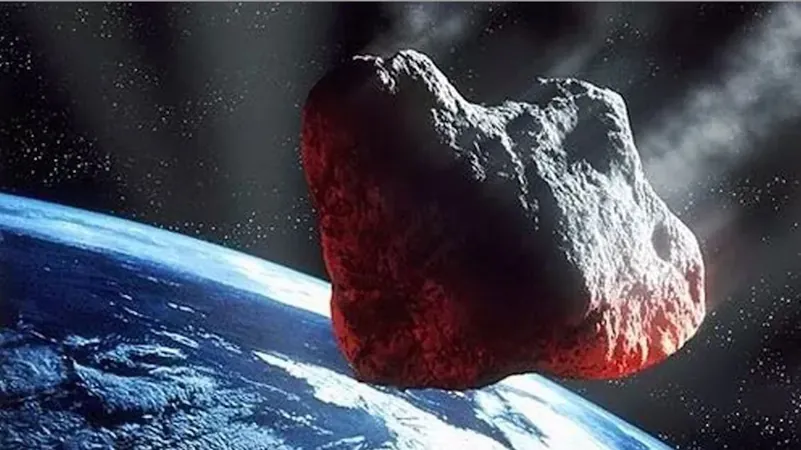
Asteroids Struck Earth 36 Million Years Ago, but the Climate Remained Unscathed! Discover Why!
2024-12-11
Author: Sarah
Introduction
In a groundbreaking study, scientists have revealed that two colossal asteroids, which struck our planet approximately 36 million years ago, did not lead to any significant long-term alterations in Earth's climate. This revelation provides critical insights into how our planet can endure even the most cataclysmic events.
Details of the Asteroid Strikes
The two asteroids, each estimated to be up to 5 miles (8 kilometers) in diameter, collided with Earth just 25,000 years apart—an incredibly brief geological timeframe. Such timing allows researchers to examine the climate reactions to these violent impacts in detail.
The study, led by Bridget Wade, a micropalaeontology expert at University College London (UCL), utilized isotopic analysis of fossils from tiny marine organisms that thrived in the oceans at that time. The fossils, recovered beneath the Gulf of Mexico during the Deep Sea Drilling Project in 1979, showed no signs of climate disruption in the 150,000 years following the asteroid strikes. “These large asteroid impacts occurred, and over the long term, our planet seemed to carry on as usual,” Wade explained.
Comparison of the Asteroids
Interestingly, the more significant of the two impacts, which created the Popigai crater in present-day Siberia—measuring nearly 60 miles (100 km) across—is notably smaller than the infamous Chicxulub impactor that led to the extinction of the dinosaurs. The other asteroid formed a crater in Chesapeake Bay, which spans between 25 to 55 miles (40 to 85 km), located a mere 125 miles (200 km) southeast of Washington, D.C.
Evidence and Analysis
Wade and co-author Natalie Cheng provided compelling evidence for these impacts by identifying thousands of silica droplets—tiny glass beads formed when the intense heat and force of the asteroid vaporized rock, sending silica soaring into the atmosphere, where it later cooled and solidified—embedded within the impact rocks.
Their meticulous analysis of carbon and oxygen isotopes from over 1,500 ancient single-celled organisms helped paint a picture of oceanic conditions during this critical period. Each fossil sample represented an 11,000-year period, allowing researchers to focus on longer-term climate patterns rather than the immediate cataclysmic events, such as tsunamis and wildfires, that would have ensued right after the impacts.
Conclusions and Future Research
Wade further noted, “Over a human timescale, these asteroid impacts would be a disaster.” This emphasizes the ongoing need for research and funding to detect and prevent potential future asteroid collisions with our planet.
As we explore the cosmos, understanding how Earth's climate has withstood such geological upheavals can help us prepare for impending threats from space. This study reiterates that, while our planet has faced severe impacts in its history, it is remarkably resilient and capable of recovering over geologic time. What other secrets do our ancient impacts hold? Only time—and continued scientific inquiry—will tell!




 Brasil (PT)
Brasil (PT)
 Canada (EN)
Canada (EN)
 Chile (ES)
Chile (ES)
 España (ES)
España (ES)
 France (FR)
France (FR)
 Hong Kong (EN)
Hong Kong (EN)
 Italia (IT)
Italia (IT)
 日本 (JA)
日本 (JA)
 Magyarország (HU)
Magyarország (HU)
 Norge (NO)
Norge (NO)
 Polska (PL)
Polska (PL)
 Schweiz (DE)
Schweiz (DE)
 Singapore (EN)
Singapore (EN)
 Sverige (SV)
Sverige (SV)
 Suomi (FI)
Suomi (FI)
 Türkiye (TR)
Türkiye (TR)